This last year we raised American Guinea hogs and in this podcast and blog post, I’m sharing all the details of raising them including what the final price per pound was, how we liked the meat, the pros and cons of raising this breed, plus whether we’ll raise them again.
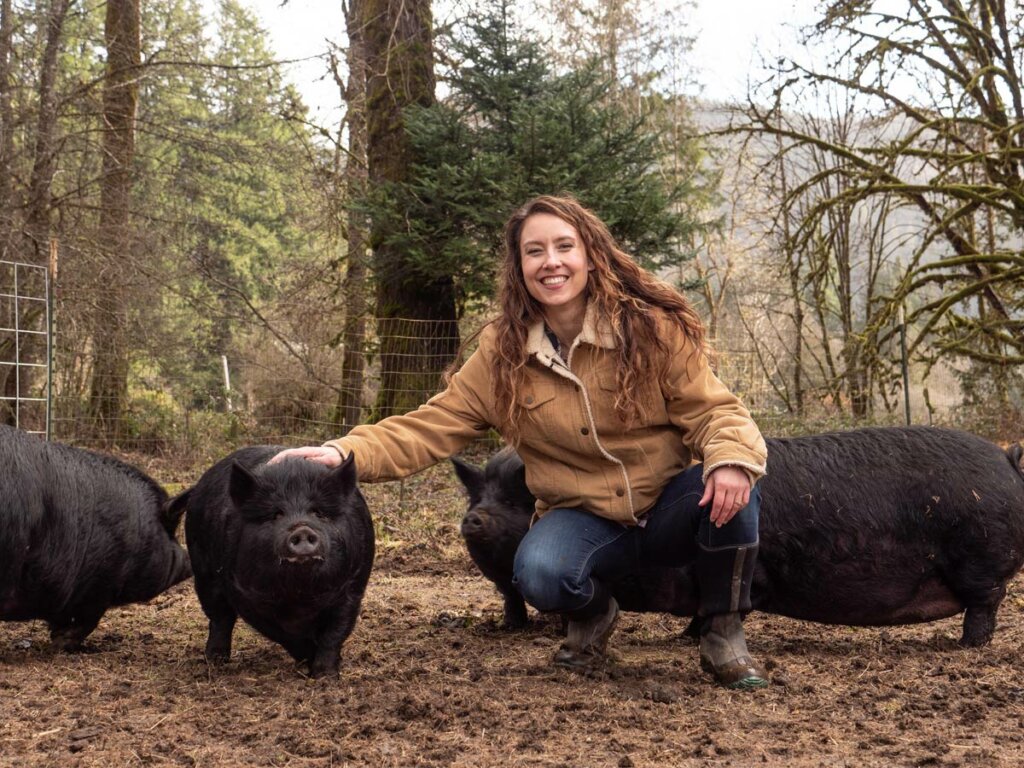
In this episode of the Pioneering Today Podcast (episode #294) I’m sharing my opinions and my experience with raising American Guinea Hogs. This is a follow-up episode from podcast episode #282 where I interviewed Cathy Paine all about the history of the American Guinea Hog.
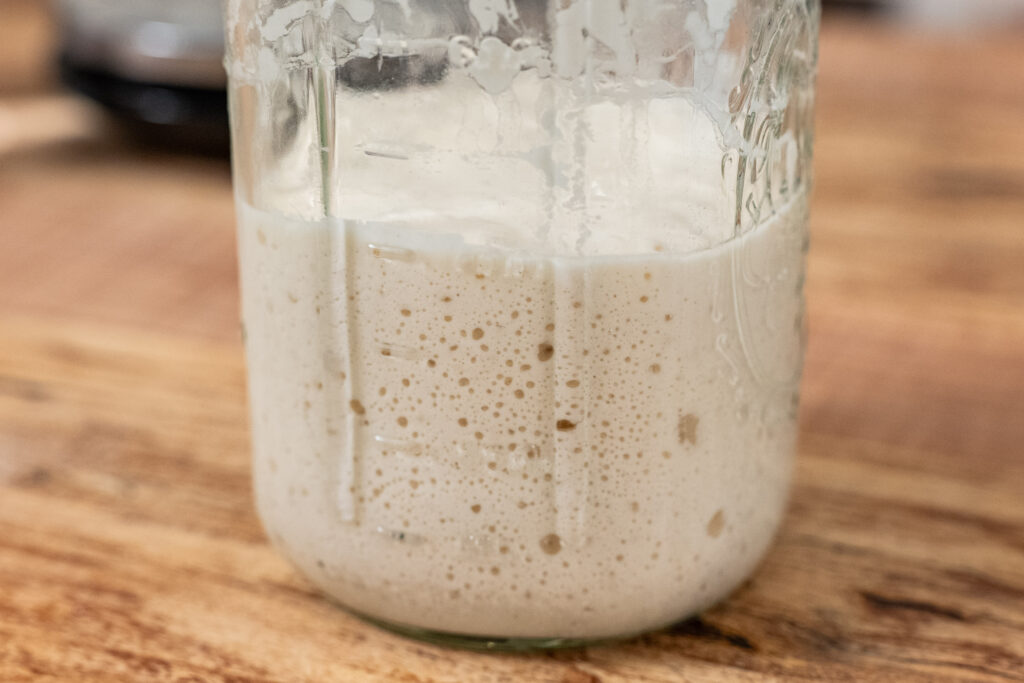
🍞 Struggling With Sourdough?
If your starter won’t take off, your loaves are dense and hard, or sourdough just flat-out overwhelms you…
👉 I’ll show you how to fix all of it.
Join my FREE live workshop and learn how to make a bubbly, active starter—the right way, from Day One.
🗓️ Jan 12 @ 1pm PT
We raise pigs about once every two to three years. Because we also raise and butcher our own meat chickens, we raise hens for laying eggs, we raise our own grass-fed cattle, and we catch our own crab every year we have plenty of variety of meat so raising pigs every other year is sufficient for our family.
However, this past year when we went to our normal breeder, we didn’t realize he had retired since the last time we bought piglets! So we were left to find another solution which led us to try out the American Guinea Hog.
Table of Contents[Hide][Show]
Raising American Guinea Hogs
There were certainly a lot of pros about the American Guinea hogs, many of which I was pleasantly surprised with. However there were also some cons. So did the pros outweigh the cons and will we raise this breed of pigs again in the future? Read on (or listen to the podcast) to find out.
Time Until Pigs Are Fully Grown
Surprisingly, this breed took much longer to grow to full size than the pigs we’ve raised in the past. You’d think for a smaller breed they’d grow more quickly, but this isn’t the case with the American Guinea Hog.
The Hereford piglets we’ve raised in year’s past have taken, on average, six months until they were at a butcherable size (which is about 200 pounds). By six months the Guinea Hogs weren’t near that size and took an extra four months until we butchered them.
This was considerable since this was through the winter months which meant we were feeding them all that time (read below for more info on feed costs).
What We Feed Our Pigs
We always buy certified organic feed in bulk from our local feed store. Because we purchase what’s called a “super-sack” (which is 400-500lbs of feed) we save money and one super-sack will feed our pigs for the six months we have them. However, because we ended up having our pigs for 10 months instead of 6, we needed to buy extra feed.
We’ll also gather up extra apples from around the valley, boil them up to create a mash, then soak the pig feed in that mash. The pigs love this and always gobble it up! Then, when the garden is plentiful, we feed the pigs any extra veggie scraps we can get from friends, family, neighbors or grocery stores (we get what the store considers “seconds”).
American Guinea Hogs are considered grazing pasture pigs, so they will eat some grasses and will forage for nuts when they can. However, because the Guinea Hogs took so long to grow we were in the dead of winter for their last few months, which meant our grass was dormant and even veggie scraps from the garden were long gone. So we had to supplement even further with extra feed and some alfalfa (as the pigs didn’t seem to care for the hay we feed our cows).
Feed Cost
Because American Guinea Hogs take longer to get to full weight, they need to be fed longer and through the winter months which means they’re eating more on a daily basis than during the summer.
Since we’d hit dormancy where none of our pasture was growing and we didn’t have extra scraps from the garden, they needed more feed in order to just stay warm and maintain weight, which we were trying to keep them on the gain since we were approaching butcher date.
So the feed cost was doubled, but the meat in return was not doubled.
Now if you live in the south or a warmer climate where grass grows year-round and you have an abundance of nut trees (Guinea Hogs love to eat nuts) then you wouldn’t need to feed them that much extra.
They will eat some hay, but they didn’t actually love what we feed our cows, so we had to supplement with alfalfa. Unfortunately, alfalfa tends to be one of the higher GMO crops, so I wasn’t thrilled with the potential of the alfalfa not being non-GMO.
To better prepare for the added feed costs, you may want to check out Stocking Up on Animal Feed (+ How Much to Feed Animals).
Average Hanging Weight
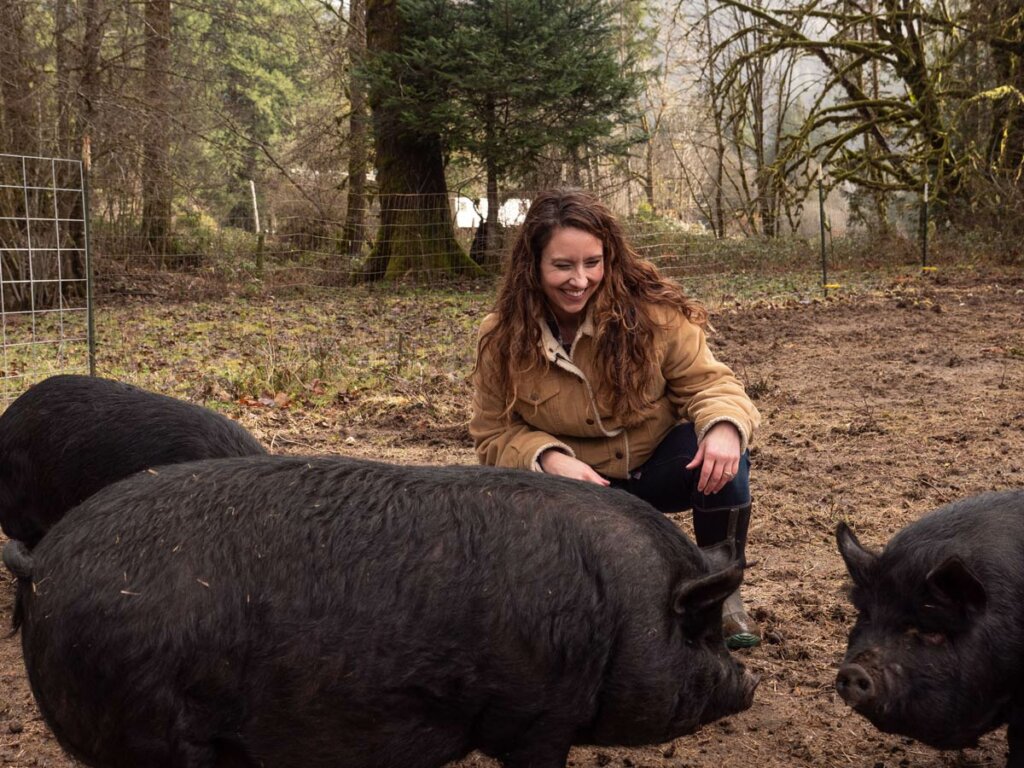
We raised five American Guinea Hogs this past year (we were raising them not only for ourselves, but also for family members and friends), they all came from the same litter and the largest hog’s hanging weight was 164 pounds. The smallest hog was 108 pounds but most of them were between 110-120 pounds.
Quantity of Meat
The quantity of the meat was perhaps the most surprising thing of all about this breed. Not to much is overall quantity, but the quantity of certain cuts.
In fact, when we went to pick up our pig from the local butcher, we got so much more bacon than we expected that we thought we had been given the bacon from all five pigs.
Since we thought the butcher had made a mistake, we actually called my brother to see if he was missing his bacon, but when we talked to him, he was thinking the same thing as we were! He had so much bacon as well that he thought he had received it all!
I’d say we got about triple the amount of bacon as we typically get from our Hereford pigs. Because our family loves bacon, this was a very pleasant surprise.
We also got a lot of pork chops from our pig, and since American Guinea Hogs are considered a “lard pig” we got quite a bit of lard for rendering as well. We’ll use the lard for skincare, making homemade soap, homemade beeswax and lard candles, and baking (check out great-grandma’s flaky pie crust recipe made with lard!). If you’re not planning on utilizing the lard from your pigs, then this breed may not be the best for you.
Sadly, I only got 5 pounds of sausage from our pig, which I wasn’t thrilled about. This isn’t a game-changer, because, in our family, we eat more bacon than we do sausage. Plus, since we raise our own beef, we have plenty of ground beef which I can add lard and seasonings to and make a mock sausage.
But if you’re hoping to raise this breed for the sausage quantity, you’ll be disappointed.
Taste and Flavor
The flavor of these pigs is phenomenal! We’ve already cooked up bacon and pork chops. Since we fed these pigs the same way we did our Hereford pigs (and use the same butcher so everything was the same) we could do a true taste comparison.
We very much prefer the flavor of these guinea hogs, however, that doesn’t mean the Hereford pigs weren’t also delicious, these were just outstanding! The bacon has the best flavor and the pork chops are juicy, flavorful and so delicious.
We haven’t yet tried the ham yet, but I’ll update this post once we have.
Temperament
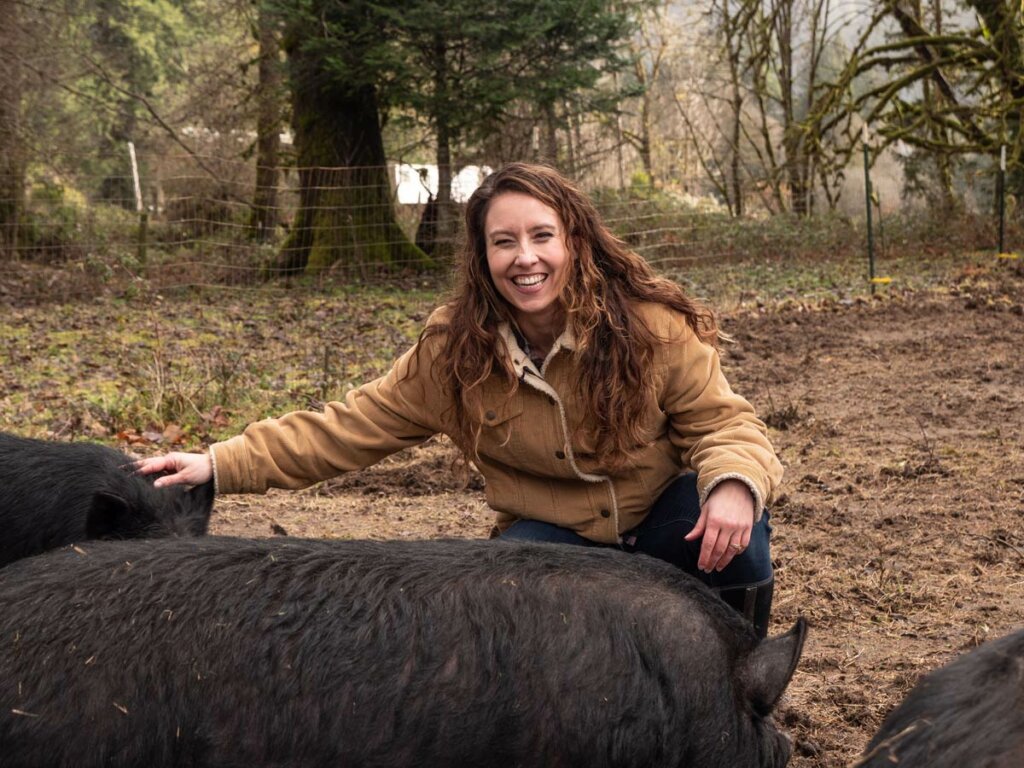
These are the sweetest pigs we’ve ever raised! When we were raising our Hereford pigs, once they were full size, it was so hard to go in and feed them because they’d get so excited and energetic that they’d knock you over if you weren’t prepared!
The Guinea Hogs are so sweet and, even though they were hungry, you could hold them back with your boot and they would back off. I could even send the kids out to care for them because they are so sweet and much easier to take care of.
Overall Cost Per Pound
We estimated out the price we paid per piglet plus the feed cost (not including the apples and produce or the supplemental alfalfa) and it was $4.69 per pound. This did include the butchering fees for cut and wrap.
Overall this is a pretty good price for organic, pasture-raised pork. You’d have a hard time finding that from the grocery store, especially since this included all the lard and so much bacon!
The Verdict – Will We Raise American Guinea Hogs Again?
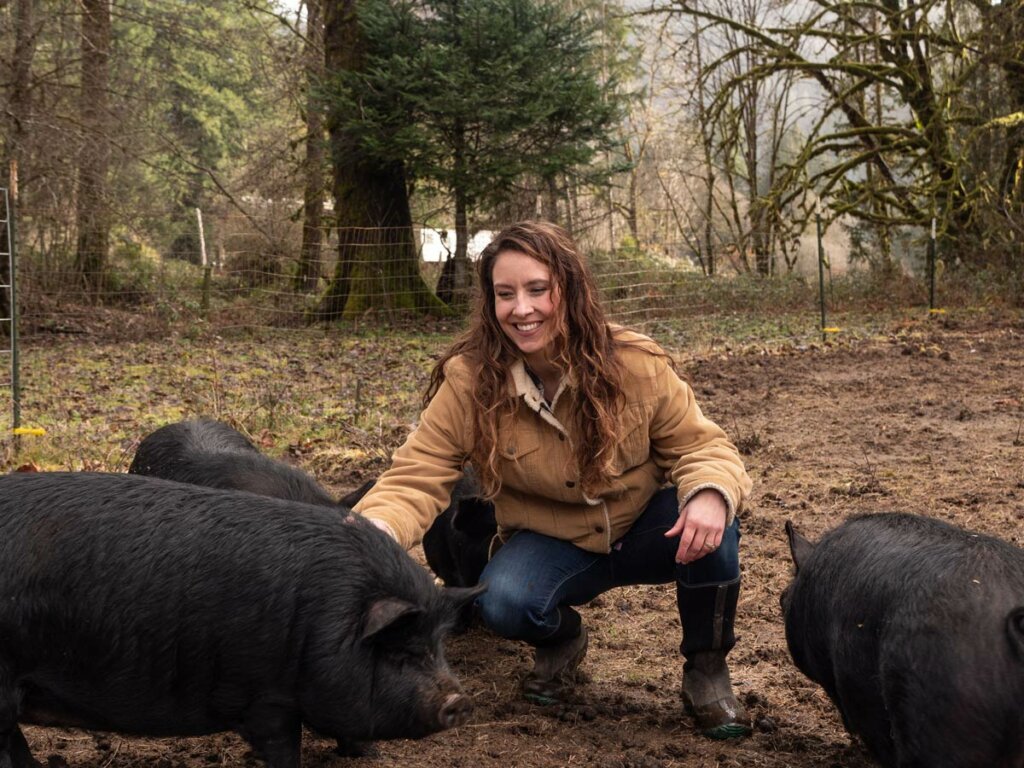
All in all, we don’t think we’ll raise American Guinea hogs again. Because they took an extra four months to raise, meaning hours of extra work throughout the winter, feeding, watering, and caring for on our end, plus the extra food costs all for less return in poundage of meat.
We’ll likely go back to the Hereford breed we’ve raised in the past simply because we know we can raise a delicious product for about half the cost of the American Guinea Hogs.
We may also try out the Idaho Pasture Pigs. This is a breed we’ve been told has a lot of the pros of the American Guinea Hogs without the cons listed above.
NOTE: I haven’t researched the Idaho Pasture Pigs so this isn’t a recommendation from me!
In This Episode:
- How long it took until the hogs were fully grown.
- What the average hanging weight of the hogs was.
- The taste and quality of the meat.
- How much of each type of meat we got.
- The temperament of the pigs.
- What did the total feed cost?
- What the price per pound ended up being.
- The verdict… will we raise American Guinea hogs again?
- Verse of the Week: 1 Corinthians 15:7
Other Helpful Links:
- Saving the American Guinea Hogs
- How to Raise, Butcher & Cure Pigs for Best Flavor Without a Fridge
- 12 Tips for Raising Pigs for Meat
- Raising Chickens for Meat
- Raising Grass-Fed Cattle for Beef
- Pros and Cons of Raising Grass-Fed Cattle
- Raising Grass-Fed Cattle – What You Need to Know on Butcher Day
- Planning Your Livestock for a Year
- Raising Egg-Laying Hens
- Catching a Year’s Worth of Dungeness Crab
- How to Render Lard and Why You Should
- Homemade Beeswax and Lard Candles
- Best Flaky Pie Crust Made With Lard
[fusebox_transcript]



